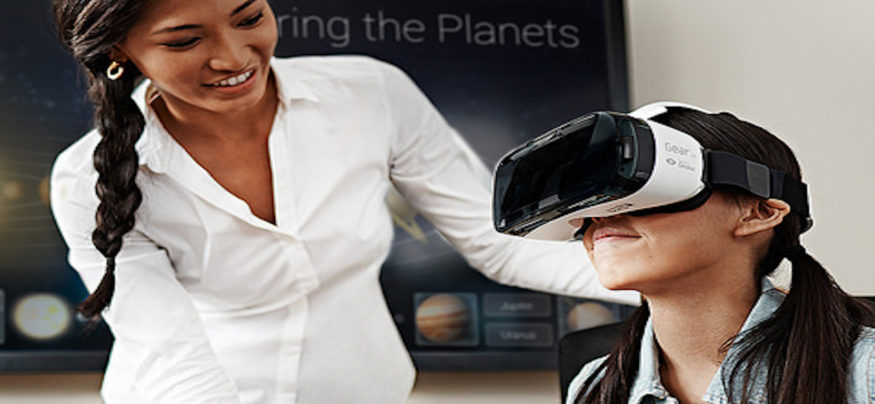When students prepare to apply to colleges, many of them plan in-person visits. These visits are often limited by the resources (both time and financial) each student has available. Some students can visit as many schools as they’d like, others must narrow it down to just a few final contenders, while others can’t visit any schools except those in their vicinity.
But, thanks to recent developments in education technology, virtual reality tours are opening up college campuses to students of all means. With a VR headset, students can walk through classrooms, libraries, dormitories and campus centers without ever needing to leave their own school.
How High Schools Can Help Students Experience College
Guidance counselors, librarians and teachers can create a library of virtual reality tours to help students experience the campuses they’re interested in. A good library will obviously include some of the most prestigious universities, but to make it useful to the widest range of students, it should also include international universities and smaller colleges and universities that specialize in a wide range of academic areas and student profiles.
In addition to a set of videos, a library needs a few VR headsets, compatible smartphones and a quiet space for students to use them. A quiet room will reduce distractions and help students to become fully immersed in the virtual tour.
How Students Can Use Virtual Reality Tours to Pick a University
Students need to be open to the opportunities VR provides to allow them to experience a university without actually traveling there. Whether they’re narrowing down their choices to the schools they’ll visit in person, or substituting VR tours for in-person visits, they’ll need to prepare for the experience, just as they would for an actual visit.
Students should write down a list of questions they want answered about each school, then fill the answers in after they finish the virtual tour. This will help them find any areas they’d like to follow up on, either on their visits or by email with admissions staff.
How Colleges Can Create Great Tours
Enlist the same students who give your in-person tours to host your virtual reality tours. Make sure they show the hidden gems of the campus and describe the sensations a visiting prospective student would be able to experience on their own. For example, the tour guides can talk about the temperature while they’re filming (and if you’ve got great weather year-round, make sure they mention that), the scent of their favorite pizza restaurant and the smell of the old books in the library. These tours are important marketing tools for colleges, so they need to be detailed and immersive.
Broadcasting students, for instance, can practice their filming skills to capture the tour guide and the tour spots. Not only do they have access to high-quality equipment, they also have experience telling visual stories. These students will also benefit from a finished video they can use in their demo reels when they’re applying for internships and jobs.
Have a team of students, alumni or staff who can respond to follow-up questions after students watch the tours. Even the best tour will leave out some details.
Have you jumped on the virtual reality bandwagon? Tell us about your experiences taking virtual reality college tours in the comments below.







